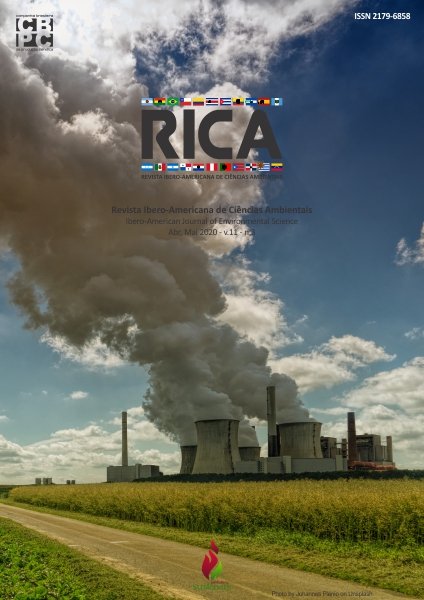Geotechnologies in environmental expertise: applicability for studies in supply dams and protected areas
DOI:
https://doi.org/10.6008/CBPC2179-6858.2020.003.0036Keywords:
Environmental expert, Environmental enforcement, Geotechnologies, Water supplyAbstract
The qualification of environmental damage depends on its perfect compliance with the terms of the environmental legislation in use. Proofing the materiality of the environmental damages is indispensable to sign the responsibility of the authors. In some cases, this proof can be very a complex task when strong pieces of evidence about its existence of the environmental impact are missing. Thus, the perpetrator of the damage can be acquitted. Given the needs for best assist the environmental expert, geotechnologies emerge as data, tools, and methods capable of facilitating the verification of the materiality of the damage. They allow qualitative and quantitative analysis of the environmental impact on the landscape either caused by deforestation and/or urban expansion. In this investigation, we present a systematic approach for producing expert pieces of evidence of environmental damage, its identification and quantification of the harm using geotechnologies such as Remote Sensing, Geographic Information Systems, Global Satellite Navigation System, Landscape Metrics. The Environmental Protection Area of Vargem das Flores in the Metropolitan Region of Belo Horizonte in the state of Minas Gerais was selected as the study area. In the core of the area is the Varzea das Flores Dam, which is an important water supply reservoir. The investigation used official and free of charge geospatial data gathered from sources such Brazilian Federal Ministry of Environment, environment and water authorities of the Minas Gerais State available at SISEMA Geospatial Data Infrastructure, as well as lancover maps from MapBiomas.org project. The investigation also counted with data collected in the field. As for the tools, the methodology was designed to use free software such as QGIS 3.8, Dinamica-EGO and Google Earth. The investigation produced qualitative and quantitative results regarding the geotechnology solutions used within the scope of the expert process. At first, the methodological approach relied on visual inspection techniques to address the qualitative aspects of the identification of possible environmental damage. Then, quantitative remote sensing techniques were used to capture metrics related to the characterization and proof of the environmental violation. Quantitative methods were also used to measure the dynamics of the landcover changes occurred in the landscape during the previous period and after the infringement. The environmental damages were identified in a simple, direct and persuasive way. Findings not only ratify the high explanatory power of spatial information for environmental judicial but also help important decisions in what concerns to that kind of expertise.
Downloads
Downloads
Published
Issue
Section
License
The CBPC - Companhia Brasileira de Produção Científica (Brazil CNPJ: 11.221.422/0001-03) the material rights of the published works. The rights relate to the publication of the work anywhere in the world, including rights to renewals, expansions and dissemination of the contribution, as well as other subsidiary rights. All electronically published works may subsequently be published in printed collections under the coordination of this company and / or its partners. The authors preserve the copyright, but are not allowed to publish the contribution in another medium, printed or digital, in Portuguese or in translation.









